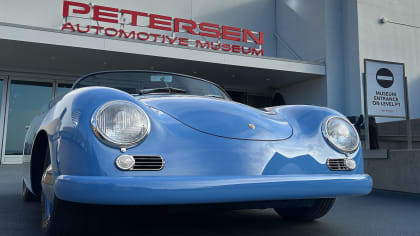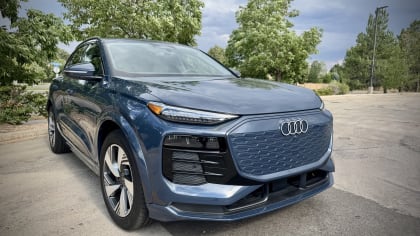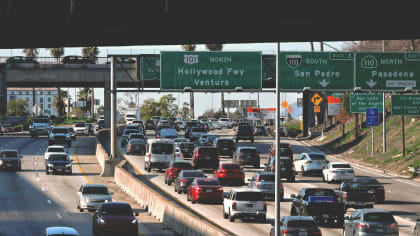UNINTENDED ACCELERATION: IS THIS THE NEW SALEM WITCH HUNT?
This article is from our archives and has not been updated and integrated with our "new" site yet... Even so, it's still awesome - so keep reading!
Published on Fri, Apr 9, 2010
By: The LACar Editorial Staff

Toyota Faces Uphill Challenge A forum was recently held to discuss the high profile cases of unintended acceleration in passenger vehicles. A distinguished panel of six professionals with direct research and investigatory experience into unintended acceleration were on hand to field questions from approximately 50 journalists. Also on the panel was a high ranking engineer from Toyota, USA. I didn't pay any attention to the names of panelists. My primary interest was in what light they could shed on the recent headline stories involving Toyota, sticky throttles, and unintended acceleration. Many of the journalists in the room seemed to know or at least recognize the panelists. I only recognized two of them. All presented themselves well. Many of the journalists on hand are members of the Motor Press Guild, a professional organization of automotive writers, an admittedly pro-automotive group. Presentations The Toyota rep started the presentation by physically demonstrating the operation of a Toyota throttle system. He explained that while his drawings and displays were of a Toyota system they were representative of those used by most current automotive manufacturers. Level-two redundancy and computer feedback are key characteristics of the throttle positioning system. Failure mode defaults to a low power situation wherein only 40% throttle is available. Catastrophic system failure results in a return to engine idle. Other panelists spoke to the question of braking power versus engine power. All agreed that under full speed and wide-open throttle conditions, the braking system of any modern passenger car available in the US can overpower the engine and bring the car to a stop. This has been verified by a number of sources through repeated testing and engineering analysis. Cases where a driver insists he was pressing the brake as hard as possible and yet was unable to halt the vehicle have been proven false. Brake pad and rotor wear provide the most evidence. Even under such severe duress as full speed braking, modern brake systems are designed to handle the load and are, indeed, expected to. Unintended acceleration of Toyota vehicles is in the news today. But Audi faced similar charges over 20 years ago. Several panelists were directly involved with the investigation of the Audi cases. Their conclusions pointed to driver error. There were never any mechanical failures discovered in either the crashed vehicles or any off-the-line assembly vehicles. Statistically, a high percentage of involved drivers were over 60 years of age, shorter than average, or both. One panelist, a professional driving instructor, spoke to the confusion drivers face when confronted with stressful, dangerous, immediate situations. Despite what the driver says after the fact, it is well documented that people's recollections of their actions rarely match their actual response. Further, he pointed out a lack of familiarity with modern Anti-Lock Braking System operation. When fully engaged, he said, the pedal will provide a vibration or pulsating feedback. This is the point of complete, normal system operation yet drivers often mistake this as a brake problem and thus soften their pedal pressure. This reduces the system's ability to control the vehicle. What Happened After a brief presentation period, the floor was opened to questions and comments from the assembled journalists. It was apparent that many in the gallery were sympathetic to the data showing driver error as the most likely cause of unintended acceleration. It was also apparent that several people came to the forum with pre-determined agendas. One man, representing the LA Times, seemed intent on getting the Toyota rep to say out loud that it was possible there was an engineering problem with Toyota vehicles. He posed his question several different ways during the forum and never was successful. Another man claimed there is an engineering bias toward the throttle versus braking systems in Toyota cars. He claimed to have investigated the issue with an outside engineer. Though he had no proof or evidence, he appeared convinced of a conspiracy on behalf of Toyota and would not be swayed by the presentation at hand. Yet another questioner showed his complete ignorance of computer operation when he stated "Chaos theory dictates that in the world of ones and zeroes, some twos and threes will occur." As a former computer engineer, I can tell you with extreme confidence that there are 10 kinds of people in the world: those that understand binary and those that don't. Following his theory, it is not "impossible" that I will play shortstop for the Dodgers. Conclusions This forum was a valuable learning exercise for anyone interested in the current headline stories involving unintended vehicle acceleration. The distinguished panel stated many times over that there is no physical evidence whatsoever to indicate a manufacturing or systemic failure by Audi, Toyota, or any other manufacturer that could lead to unintended acceleration. Thirty-plus years of data indicates that driver error, compounded by driver experience, age, and physical stature are the most frequent commonalities in cases of unintended acceleration. In Toyota's case, sheer numbers tell the story. There are hundreds of complaints involving millions of vehicles driven billions of miles. Dividing the complaints by number of vehicles, then dividing again by the number of miles driven yields a failure rate with so many zeroes to right of the decimal point that it becomes insignificant. Despite the evidence, there were people in the gallery who seemed intent on holding the manufacturer accountable for all that happens in or around their vehicles. This is the hill Toyota faces. It is the hill of agenda driven, willful ignorance. Harold Osmer




